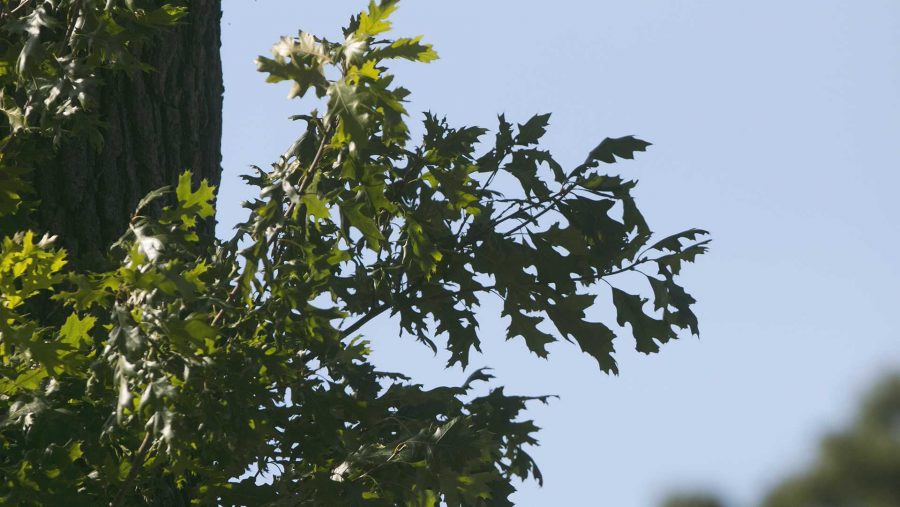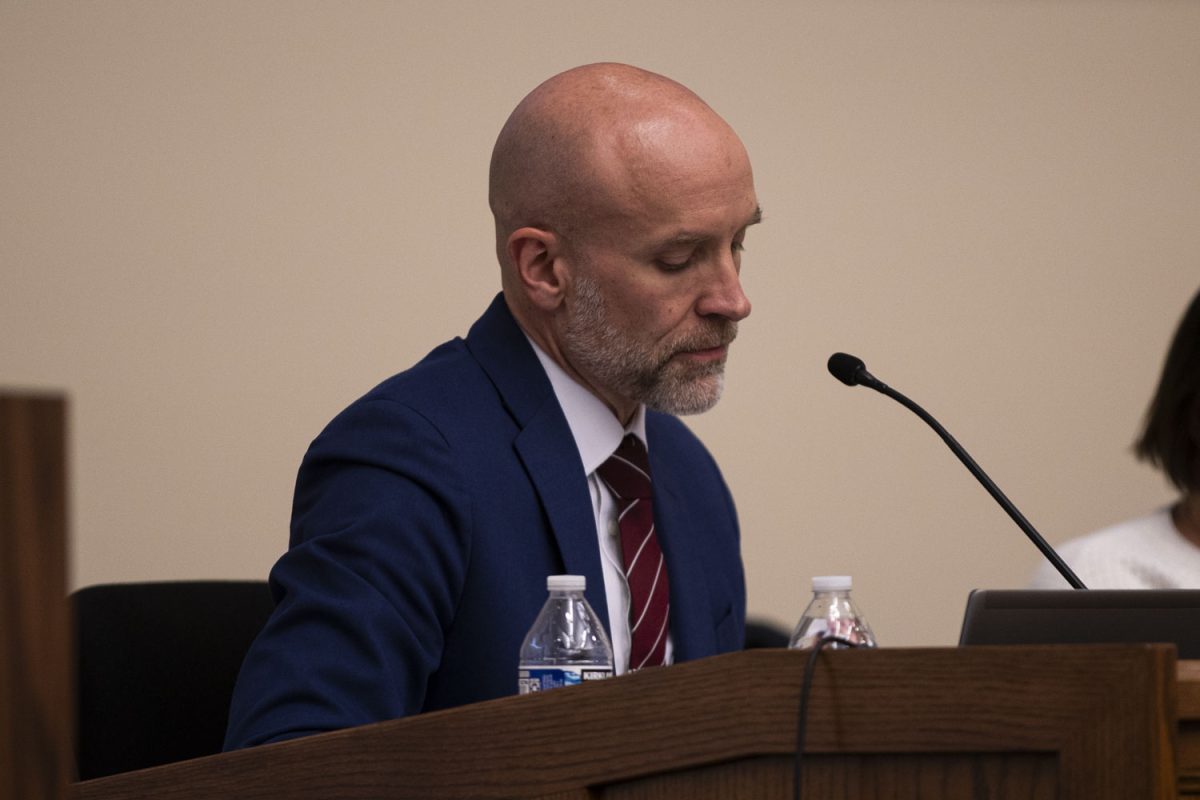Iowa City may be in for a less colorful fall — because of the lack of rain, the leaves are falling before they have a chance to change.
Trees begin to change colors because of the lack of chemicals needed in order to maintain their typical hues.
“At a certain point in the year, it becomes energetically inefficient for them to maintain photosynthetic pigments and to maintain their leaves,” Assistant Professor Heather Sander said. “When they stop producing the green pigment, that’s when the other pigments are shown.”
This year, trees are starting to change color about a week or two earlier than average, because of the drought that many areas throughout the state are experiencing.
“In Iowa City, we’ve been fairly lucky with rain, in comparison to other areas to the east or south,” Visiting Assistant Professor Pete Akers said. “But with all of our sunny days, it can trigger the trees so that they can avoid some of that water stress. If we continue to have this drought, we can expect most of the trees to lose their leaves.”
“The shortening of the days causes the trees to start to go dormant,” campus arborist Andy Dahl said. “The leaves are dropping before any of the colors can develop, that’s why it seems like an early fall.”
Dahl, along with the UI campus landscaping operations, has his hands full with maintaining the grounds because of all of the fallen leaves. The maintenance crew has removed the leaves to use them later in the academic year, with the hopes of composting them for use on new trees and plants.
UI has been designated with Tree Campus USA awards for the past eight years, recognized by the Arbor Day Foundation for the campus’ dedication to forestry management and environmental preservation. Because the campus has been distinguished with this honor, some may fear that the current drought will affect the environment.
Both Sander and Akers said that while established trees won’t be affected by the early fall, newer trees can experience long-term effects. Throughout the past several weeks, numerous ash trees have been removed from campus because of the emerald ash borer risk, and they have been replaced with new and healthy trees. These new trees are at-risk for being affected, but if they continue to be watered through springtime, harm will be minimized.
“An early fall doesn’t indicate a long-term impact,” Sander said. “Trees are long-lived organisms and are adapted to handle difficult years; it doesn’t have any real long-term effect.”
Dahl said he hopes people will enjoy the fall colors the UI offers.
“I hope that people enjoy the species that we’re planting and that there’s some color to enjoy,” Dahl said. “I would say this any season, but get out and enjoy the trees.”







